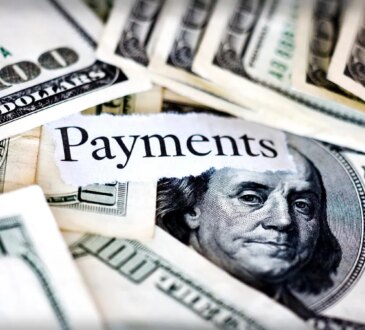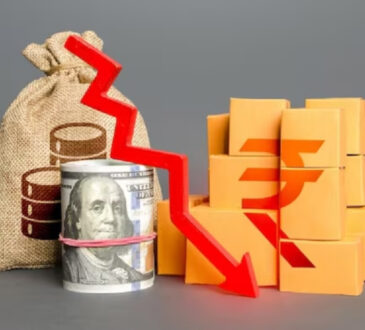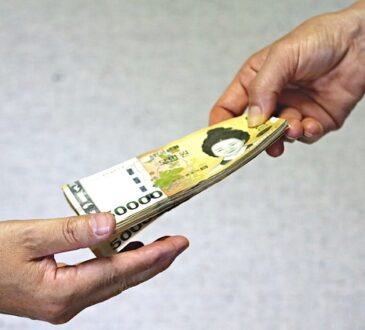
If US-India trade ties improve, pressure on the currency could ease; otherwise, the Reserve Bank of India may be forced to intervene
UNTIL mid-October, the Indian rupee was Asia’s worst-performing currency of 2025. It was heading for its biggest annual drop since 2022 – the year Russia’s invasion of Ukraine sent oil prices soaring past US$100 per barrel, a major blow for India, which imports about 90 per cent of its crude.
This year, the rupee’s weakness has been fuelled by higher US tariffs on Indian exports and a wave of foreign outflows from local equities. By last Tuesday (Oct 14), it had fallen to a near-record low of 88.8025 per US dollar. Then, over just three days, the rupee rebounded more than 1 per cent – a move traders attributed to central bank intervention.
Now the rupee is at a crucial juncture. There are tentative signs that US-India trade ties may be improving, which could ease pressure on the currency. But if that doesn’t happen, the Reserve Bank of India (RBI) may be forced to step in again – especially if it suspects a pickup in speculative bets against the rupee.
Why did India’s central bank intervene, and how?
The RBI grew alarmed in mid-October as the rupee neared 89 to the US dollar, and was determined not to let the currency breach its record low of 88.8050, according to a person familiar with the matter.
In response, it’s understood that the RBI sold US dollars from its foreign exchange reserves, in both the spot and offshore markets.
In the weeks prior, the central bank also built up short US dollar positions worth at least US$15 billion in the offshore non-deliverable forwards market. In effect, the RBI was betting on a weaker US dollar – and shoring up the rupee – by entering contracts to sell the greenback at a future date.
BT in your inbox

Start and end each day with the latest news stories and analyses delivered straight to your inbox.
While the new RBI governor earlier this year showed a willingness to loosen the central bank’s tight grip on the currency, traders now expect it to intervene more aggressively to stamp out what it believes are speculative bets on the currency’s decline.
It has ample firepower to do so, with nearly US$700 billion in foreign-exchange reserves – among the largest in the world and enough to cover about 11 months of imports.
What caused such a weak rupee this year?
The rupee first dipped in January before it eked out slight gains against the US dollar in March and April. At its strongest, in early May, the currency traded at 83.7538 per US dollar. This was around the same time that investors bet that India would be among the first to clinch a trade deal with the US.
Expectations of lower tariffs on Indian exports fuelled optimism that foreign capital would flow into the country as companies sought manufacturing hubs outside of China.
The tide turned in July, when US President Donald Trump announced plans to impose higher-than-anticipated tariffs and threatened to penalise India for purchasing Russian energy and weapons. The levies dashed New Delhi’s hopes of preferential treatment over its Asian peers and the rupee suffered its worst monthly loss since 2022.
In August, the US set tariffs on most Indian exports at 50 per cent – the highest across Asia – which included a “secondary” 25 per cent penalty tariff for India’s trade with Russia. The rupee fell to a series of record lows, breaching 88 per US dollar.
In September, the currency weakened further after reports that Trump had urged European nations to impose similar Russia-related penalty tariffs on Indian imports, and that the US planned to raise the fee for its high-skilled H-1B visa – the vast majority of which go to Indian-born workers – from a few hundred dollars to US$100,000.
A frantic foreign exodus from Indian equities this year due to US tariffs, pricey stock valuations, slowing economic growth and persistently soft corporate earnings, has piled additional pressure on the rupee. As at Oct 15, foreign investors had pulled out more than US$16.5 billion from Indian shares this year, closing in on a record outflow set in 2022.
The rupee’s overall depreciation this year didn’t come as a huge surprise; the currency has lost value every year since 2018. What made its weakness stand out is that the US dollar itself has been slipping, while many emerging-market currencies in the region have strengthened.
Why has the rupee been faring worse than other currencies?
The rupee slumped this year as peers such as the Taiwan dollar, Malaysian ringgit, Thai baht and South Korean won strengthened.
One reason is that those countries face far less US tariffs on their exports. India’s economy – though largely driven by its domestic market – has been hit particularly hard because the US is its largest export market.
Another drag on the rupee has been India’s persistent current account deficit, which means it imports more than it exports. India must buy foreign currency – normally US dollars – to pay for those imports, which weakens demand for the rupee.
By contrast, Taiwan, Malaysia, Thailand and South Korea are all running current account surpluses, which means they export more than they import, earning foreign currency from their sales abroad.
Fears that the US dollar will continue to fall amid trade frictions, policy uncertainties and potential US Federal Reserve rate cuts have also prompted exporters elsewhere in Asia to sell more of their US dollar holdings than usual and convert the proceeds back into their local currencies, further amplifying their value.
What are the pros and cons of a weak rupee?
A weaker rupee makes Indian goods and services cheaper abroad, boosting export competitiveness. This helps to offset the tariff pressures facing exporters, as India seeks to expand its markets by signing trade deals with countries such as the UK.
It’s also a boon for families of Indian workers abroad who send money home. India is the world’s largest recipient of remittances, with a record US$137 billion flowing into the country in 2024, according to the World Bank. A softer currency means every US dollar remitted buys more rupees, lifting household incomes and consumption.
On the flip side, a weaker rupee makes imports more expensive, pushing up the cost of essential items such as oil, fertilisers and electronics, most of which India buys from overseas.




